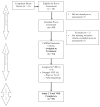Does engagement with exposure yield better outcomes? Components of presence as a predictor of treatment response for virtual reality exposure therapy for social phobia
- PMID: 21515027
- PMCID: PMC3401534
- DOI: 10.1016/j.janxdis.2011.03.004
Does engagement with exposure yield better outcomes? Components of presence as a predictor of treatment response for virtual reality exposure therapy for social phobia
Abstract
Virtual reality exposure (VRE) has been shown to be effective for treating a variety of anxiety disorders, including social phobia. Presence, or the level of connection an individual feels with the virtual environment, is widely discussed as a critical construct both for the experience of anxiety within a virtual environment and for a successful response to VRE. Two published studies show that whereas generalized presence relates to fear ratings during VRE, it does not relate to treatment response. However, presence has been conceptualized as multidimensional, with three primary factors (spatial presence, involvement, and realness). These factors can be linked to other research on the facilitation of fear during exposure, inhibitors of treatment response (e.g., distraction), and more recent theoretical discussions of the mechanisms of exposure therapy, such as Bouton's description of expectancy violation. As such, one or more of these components of presence may be more strongly associated with the experience of fear during VRE and treatment response than the overarching construct. The current study (N=41) evaluated relations between three theorized components of presence, fear ratings during VRE, and treatment response for VRE for social phobia. Results suggest that total presence and realness subscale scores were related to in-session peak fear ratings. However, only scores on the involvement subscale significantly predicted treatment response. Implications of these findings are discussed.
Copyright © 2011 Elsevier Ltd. All rights reserved.
Figures
References
-
- Altmaier EM, Ross SL, Leary MR, Thornbrough M. Matching stress inoculation’s treatment components to client’s anxiety mode. Journal of Counseling Psychology. 1982;29(3):331–334. doi: 10.1037/0022-0167.29.3.331. - DOI
-
- Altman DG, Schulz KF, Moher D, Egger M, Davidoff F, Elbourne D, et al. The revised CONSORT statement for reporting randomized trials: explanation and elaboration. Annals of Internal Medicine. 2001;134(8):663–694. - PubMed
-
- Anderson PL, Rothbaum BO, Hodges LF. Social phobia: virtual reality exposure therapy for fear of public speaking. Paper presented at the Annual Meeting of the American Psychological Association; Washington, DC. 2000.
Publication types
MeSH terms
Grants and funding
LinkOut - more resources
Full Text Sources
Medical
Research Materials




